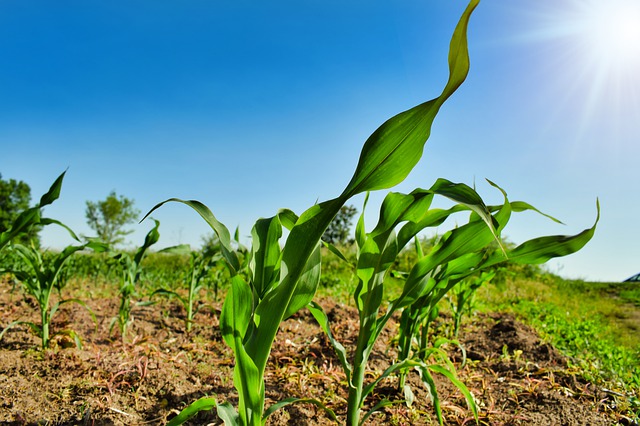The newly proposed Farmers’ Bills have propagated a series of myths in the popular discourse. This article seeks to examine those myths in the light latest trends and practices in the Indian agriculture sector.
Myths regarding the new proposed Farm Bills
Myth 1:
- MSP is not mentioned in the Farm Bill.
It is available in the bill.
In the farmer’s (Empowerment & Protection) Agreement on Price Assurance & Farm Services Act,2020 – Refer Point No.5 – There is a mention of Guaranteed Price or any suitable benchmark price, in other words Minimum Support Price (MSP).
Myth 2:
- Corporate sector will snatch the land from the farmers
It is impossible as the farmers are protected in this law. (Refer Point No.8)
Myth 3:
- Punjab is India’s leadership food grain producer
Indian food grain production for the year 19-20: Top 5 states
(source: RBI statistical data for the year 2019-20)
Uttar Pradesh :55Lakh Tons
Madhya Pradesh : 33Lakh Tons
Punjab : 30Lakh Tons
Rajasthan : 23Lakh Tons
Haryana : 18Lakh Tons
MP & UP produce more than Punjab.
Myth 4:
- Punjab has the highest GVA
Gross Value added: Agri & Allied Industries (GVA is Sale price minus Production Cost). in Simple terms it is the profit margin.
Punjab : 0.9; Maharashtra : 1.9; Andhra Pradesh: 1.8; West Bengal: 1.4; TamilNadu:1.2
TN produces a third of Punjab’s output but makes more profit than Punjab.
Myth 5:
- NDA is not helping Farmers with higher MSP compared to UPA
MSP of Paddy per Quintal
2009-10: Rs.950
2013-14: Rs.1310
2020-21: Rs.1868
Increase in Rs.360 during UPA II Vs Rs.568 during NDA
MSP of Wheat per Quintal
2009-10: Rs.1080
2013-14: Rs.1350
2020-21: Rs.1925
Increase in Rs.270 during UPA II Vs Rs. 575 under NDA

Myth 6:
- NDA is not purchasing enough produce from farmers
Wheat purchase under this government has seen a 200% rise compared to UPA – II. Present (NDA) government has purchased wheat worth Rs.3 lakh crore in 2014-19.
The NDA government has purchased 250% more paddy compared to UPA-II directly from farmers. Paddy worth Rs 5 lakh crore has been purchased by the NDA government, 2.5 times than what the UPA-II bought.
The buying of pulses has seen considerable growth under the NDA government when compared to UPA-II. Pulses worth Rs 50,000 crore has been purchased by this government, 7592 8mes compared to the Rs 650 crore spent by UPA-II.
Myth 7:
- Consumer Price Index has increased farmer expenditure
The Consumer Price Index (CPI) is a measure that examines the weighted average of prices of a basket of consumer goods and services, such as transportation, food, and medical care.
2008 – 09: 450
2013 – 14: 750
2019 – 20: 980
CPI grew by 11% during UPA 2 against just 5.5% during NDA. This means, inflation in farmer expenditure is halved during NDA.
The middlemen being left out have suffered losses.
Myth 8:
The farmer protests are without vested interests.
FCI was routing all the payments to farmers through middlemen. They are paid 2.5% commission for every transaction.
Just for Paddy and Wheat, Middlemen in Punjab made close to Rs 3,330 crore. This excludes pulses, cereals, oil seeds, cotton, sugarcane and vegetables. The unions are strong and the farmers cannot bypass the middlemen.
Farmers are paid just 30% of MSP by Middlemen. So being a Middlemen in Punjab is a double bonanza. Middlemen being left out is a huge revenue loss. 1800 Mandi tax per year is a loss to the state government
Myth 9:
- Farmers stand to lose under the new farm bills
Soybean farmers in Maharashtra have benefited to get more out of APMC deals. In the last three months, Maharashtra FPC, the umbrella body of farmer producing companies (FPC) in Maharashtra, estimates that since the laws were enacted in September, FPCs in four districts have made worth Rs 10 crore from trade outside mandis.
Myth 10:
- These Bills are framed to benefit the corporate sector only
In 2012, an audit indicated food products worth Rs 92,000 crore go waste due to lack of storage space.
At the same time retail chains in India started expanding and they were used as secondary storage space. So, they procured farm products directly from farmers or through FCI. This trend controlled wastage to some extent.
Myth 11:
- Contract Farming is harmful
If Contract Farming is a problem, then how have farmers from Punjab and Haryana been earning so much? Under contract farming farmers can sell their produce at the mandis as well as anywhere outside the mandis. Farmers will have more selling options. Indian agriculture will thrive.
Myth 12:
NDA wants to destroy mandis and end MSP
If the government had to end MSP, why would it continuously increase the rates and buy more from farmers on a year-on-year basis? If the govt had to close mandis, why would it digitize them on e-NAM portal? Today, 1,000 mandis are registered on the portal.
Myth 13:
MSP is an unmitigated boon for farmers.
At present MSP of most Indian crops is higher than global market prices. That is why Indian agriculture sector is losing out in the export market.
No one is talking about the quality of crops with respect to MSP. Who will buy the material which is substandard? What should be the price for that material? With an ever-increasing cost with further demands to hike MSP will make prices in world markets comparably cheaper. This will make the private sector buy their raw materials from international markets instead of buying from Indian farmers and Indian agriculture sector will suffer. For example, 70% of edible oil is imported. Sunflower crop has virtually vanished because it was unable to compete with the price of imported crops. Demand for sesame and groundnut oil has reduced drastically, for similar reasons.
The sugar sector is suffering too because we cannot export without subsidy. India used to export 45 lakh tons of maize every year. But at present it has come down to 5 lakh tons due to rising MSP. Maize is 50% cheaper in the world market. This price difference is making Indian maize farmers suffer. Our imports have grown at a faster rate than our exports. If India’s cost of agricultural production is so high, an ever-increasing MSP will deter India from being part of any international trade agreements and Indian agriculture will suffer.
The MSP formula proposed by the Swaminathan committee encourages inefficient production. Higher the cost of production, higher will be the MSP. Organic agriculture needs fewer resources and has a lower cost of production. According to CACP-based Swaminathan Formula, they should get less MSP, if cost of production is low and there is no loss of productivity.
The author of the article holds the sole responsibility of the views and opinions expressed in this published content. thespace.ink magazine is not responsible for the content in any way whatsoever.
Dr. Suman K. Mukerjee is an economist and highly respected academician. He has more than 46 years of teaching and research experience in India and abroad which includes institutions like XLRI, IISWBM, St. Xaviers’ College, Kolkata, IIT Delhi etc. He has also been a columnist and member of several advisory boards of the Indian Government as well as the West Bengal Government. He is an alumnus of St. Xavier’s College, Kolkata, St. Stephen’s College and Delhi School of Economics. Presently he is a member of State Advisory Board on Education, Government of West Bengal, Advisory Board, Chairman International Marketing and Business Community, Federation of Small and Medium Industries (FOSMI), West Bengal, Economics Sub Committee BCC&I, MCC&I, ASSOCHAM, CII(ER). He is also a life member & general council member of Ceners-k, an independent thinking body of researchers on International Development.








One Response
The guaranteed price or MSP mentioned in this article is in the case where there may be a price variation and not as the basic component of the agreement. Also the price reference and addition amount highlighted here is for bonus and not part of the basic agreement. Let us try to be honest and analyse the bill in an unbiased fashion. In legal world a simple punctuation can change the fate of an appellant.